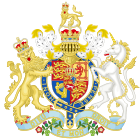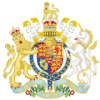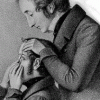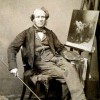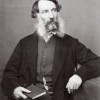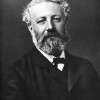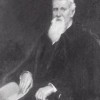Hoffenberg Timeline
Created by Dino Franco Felluga on Sun, 04/25/2021 - 12:04
Part of Group:
Sample timeline to illustrate the usefulness of the timeline tool.
Timeline
Chronological table
|
Date |
Event | Created by | Associated Places | |
|---|---|---|---|---|
| 22 Jun 1802 |
Criminal Jurisdiction Act passed
Articles |
David Rettenmaier | ||
| 15 Sep 1830 |
Opening of Liverpool & Manchester Railway
Articles
|
David Rettenmaier | ||
| 29 Aug 1833 |
Slavery Abolition Act
Articles |
David Rettenmaier | ||
| 10 Jan 1840 |
launch of UK Penny PostThe introduction of the Penny Post in 1840, the rapid expansion of the rail network in the UK, and the introduction of steamships on the transatlantic routes, created the optimum conditions for writing letters. Prior to 1840, the cost of inland postage was prohibitively expensive; it was calculated according to the number of sheets multiplied by the distance traveled. Additional charges were often levied and the burden of payment fell on the recipient, which did nothing to encourage frequent communication. The Penny Post Act drastically reduced the cost of an inland letter to a universal flat rate of just one penny for a half an ounce, and the introduction of the prepaid penny stamp removed the deterrent to accepting a letter. Articles |
David Rettenmaier | ||
| 24 Aug 1846 |
Patrick Brontë’s Cataract Surgery
ArticlesMary Wilson Carpenter, “A Cultural History of Ophthalmology in Nineteenth-Century Britain” |
David Rettenmaier | ||
| Dec 1849 |
Carlyle's "Negro Question"
Articles |
David Rettenmaier | ||
| 10 May 1857 to 20 Jun 1858 |
Indian Uprising
ArticlesPriti Joshi, “1857; or, Can the Indian ‘Mutiny’ Be Fixed?” Related ArticlesJulie Codell, “On the Delhi Coronation Durbars, 1877, 1903, 1911″ |
David Rettenmaier | ||
| 19 Apr 1862 |
Railway Station exhibited
ArticlesPamela Fletcher, "On the Rise of the Commercial Art Gallery in London" |
David Rettenmaier | ||
| 25 Aug 1862 |
Victoria Station openedOn 25 August 1862, London Victoria Station was opened, connecting London to the Kent coast. Related ArticlesPaul Fyfe, “On the Opening of the Liverpool and Manchester Railway, 1830″ Nancy Rose Marshall, “On William Powell Frith’s Railway Station, April 1862″ |
David Rettenmaier | ||
| 2 Oct 1865 |
George William Gordon executedGordon, a Jamaican former slave and elected member of the Jamaica House of Assembly, is executed by hanging after a court martial condemns him to death for his alleged role in encouraging the Morant Bay rebellion. Articles |
David Rettenmaier | ||
| 11 Oct 1865 |
Morant Bay Rebellion
Articles |
David Rettenmaier | ||
| Dec 1865 |
“Jamaica Committee”
Articles |
David Rettenmaier | ||
| 2 Jul 1866 |
Hyde Park demonstrationHyde Park Demonstration of the Major Reform League on 23 July 1866. After the British government banned a meeting organized to press for voting rights, 200,000 people entered the Park and clashed with police and soldiers. Related ArticlesPeter Melville Logan, “On Culture: Matthew Arnold’s Culture and Anarchy, 1869″ |
David Rettenmaier | ||
| 1 Feb 1867 |
Fenians attack coast guardIrish Fenians attack a coast guard station in County Kerry, Ireland, seizing arms and attacking policemen; authorities prevent a similar attack by Fenians on Chester Castle in Western England. Related Articles |
David Rettenmaier | ||
| 11 Feb 1867 |
Trafalgar Square demonstrationMajor Reform League march and demonstration in Trafalgar Square, London on 11 February 1867. Related Articles |
David Rettenmaier | ||
| 27 Mar 1867 |
Edward John Eyre indictment hearing
Articles |
David Rettenmaier | ||
| 11 Apr 1867 |
Nelson and Brand charges dismissedA Middlesex grand jury at London’s Old Bailey criminal court dismissed charges brought by the Jamaica Committee against Colonel Abercrombie Nelson and Lieutenant Herbert Brand for the murder (via illegal court martial) of George William Gordon at Morant Bay, Jamaica in October 1865. The trial was a result of the Morant Bay Rebellion of 11 October 1865. Articles |
David Rettenmaier | ||
| 15 Aug 1867 |
Second Reform Act
ArticlesJanice Carlisle, "On the Second Reform Act, 1867" Related ArticlesCarolyn Vellenga Berman, “On the Reform Act of 1832″ Elaine Hadley, “On Opinion Politics and the Ballot Act of 1872″ |
David Rettenmaier | ||
| 1 Dec 1867 |
Clerkenwell Prison bombingA bomb planted by Irish Fenians at Clerkenwell Prison in London exploded on 13 December 1867, killing over a dozen people and injuring many more. Related Articles |
David Rettenmaier | ||
| Jun 1868 |
Edward John Eyre acquitted
Articles |
David Rettenmaier | ||
| Jun 1870 |
Civil suit against Edward John Eyre nullified
Articles |
David Rettenmaier | ||
| 6 Nov 1872 to 22 Dec 1872 |
Around the World in Eighty Days Related Articles |
David Rettenmaier | ||
| Sep 1873 |
Financial panic of 1873 begins
Related Articles |
David Rettenmaier |

